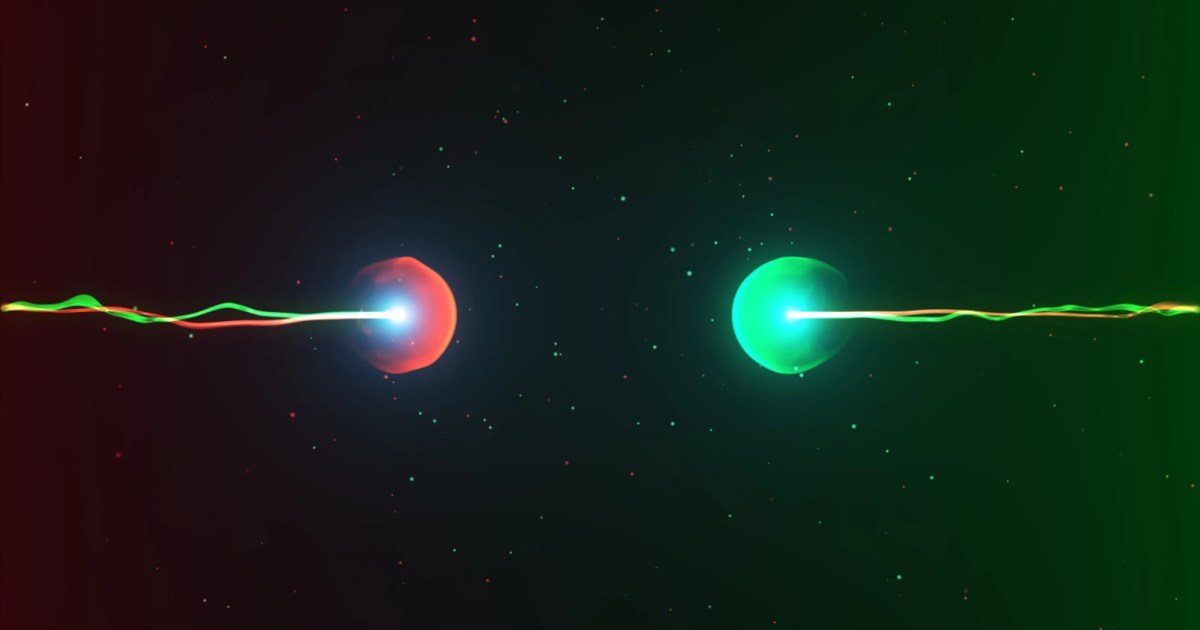Sign up for the Starts With a Bang newsletter
Travel the universe with Dr. Ethan Siegel as he answers the biggest questions of all.
Since the 1800s, energetic particles have probed the fundamental nature of matter.
Rutherford’s gold foil experiment showed that the atom was mostly empty space, but that there was a concentration of mass at one point that was far greater than the mass of an alpha particle: the atomic nucleus. By observing that some of the emitted, radioactive particles bounced back, or ricocheted off, in a different direction than they were emitted in, Rutherford was able to demonstrate the existence of a compact, massive nucleus to the atom.
By bombarding matter with other particles, we probe their internal structures.

The production of matter/antimatter pairs (left) from two photons is a completely reversible reaction (right), with matter/antimatter annihilating back to two photons. This creation-and-annihilation process, which obeys E = mc², is the only known way to create and destroy matter or antimatter. If high-energy gamma-rays collide with other particles, there is a chance to produce electron-positron pairs, diminishing the gamma-ray flux observed at great distances.
At still greater energies, we create new quanta via Einstein’s E=mc².
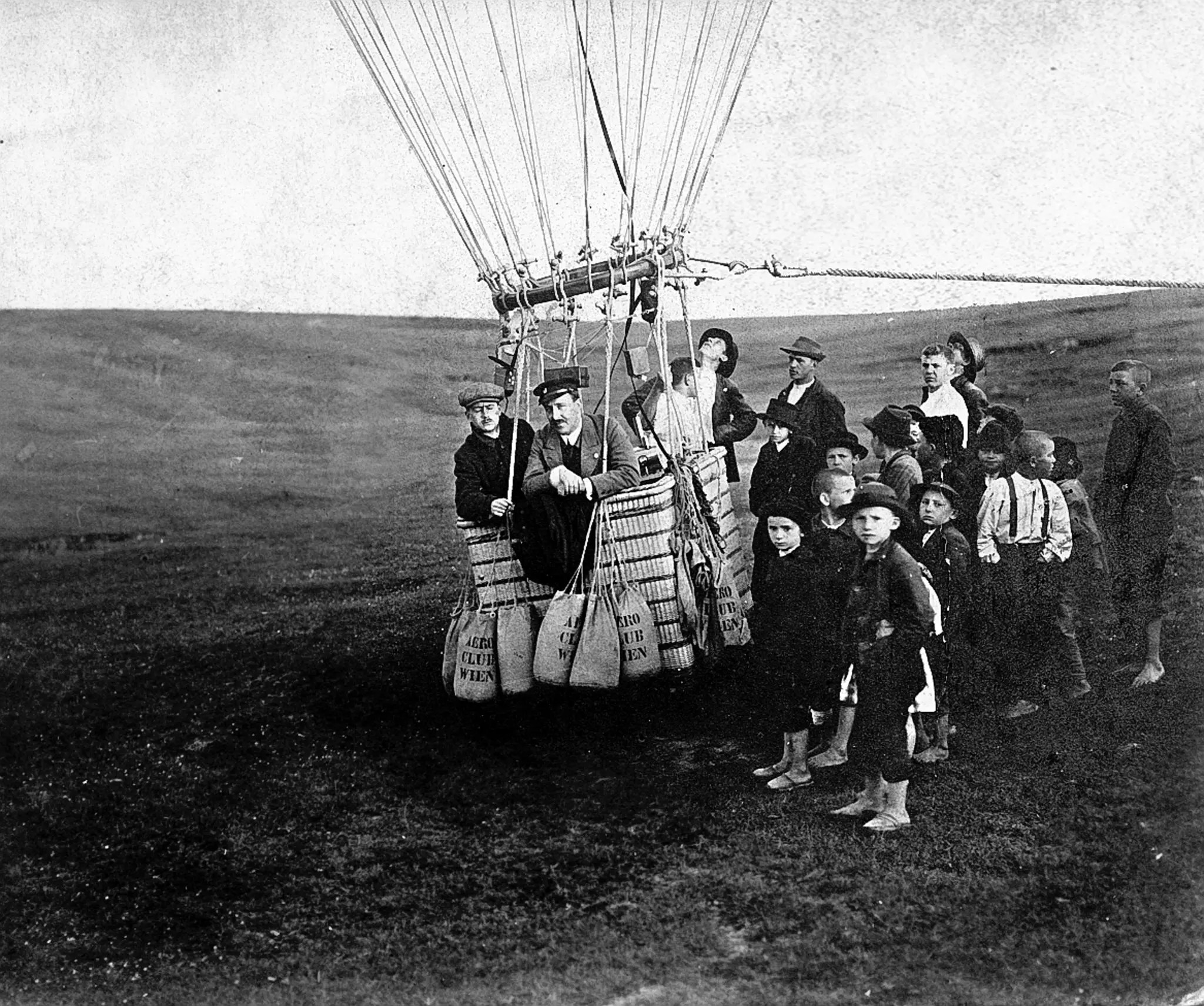
By taking a hot air balloon up to high altitudes, far higher than could be achieved by simply walking, hiking, or driving to any location, scientist Victor Hess was able to use a detector to demonstrate the existence and reveal the components of cosmic rays. In many ways, these early expeditions, dating back to 1912, marked the birth of cosmic ray astrophysics.
Early experiments with cosmic rays first revealed heavy, unstable Standard Model particles.
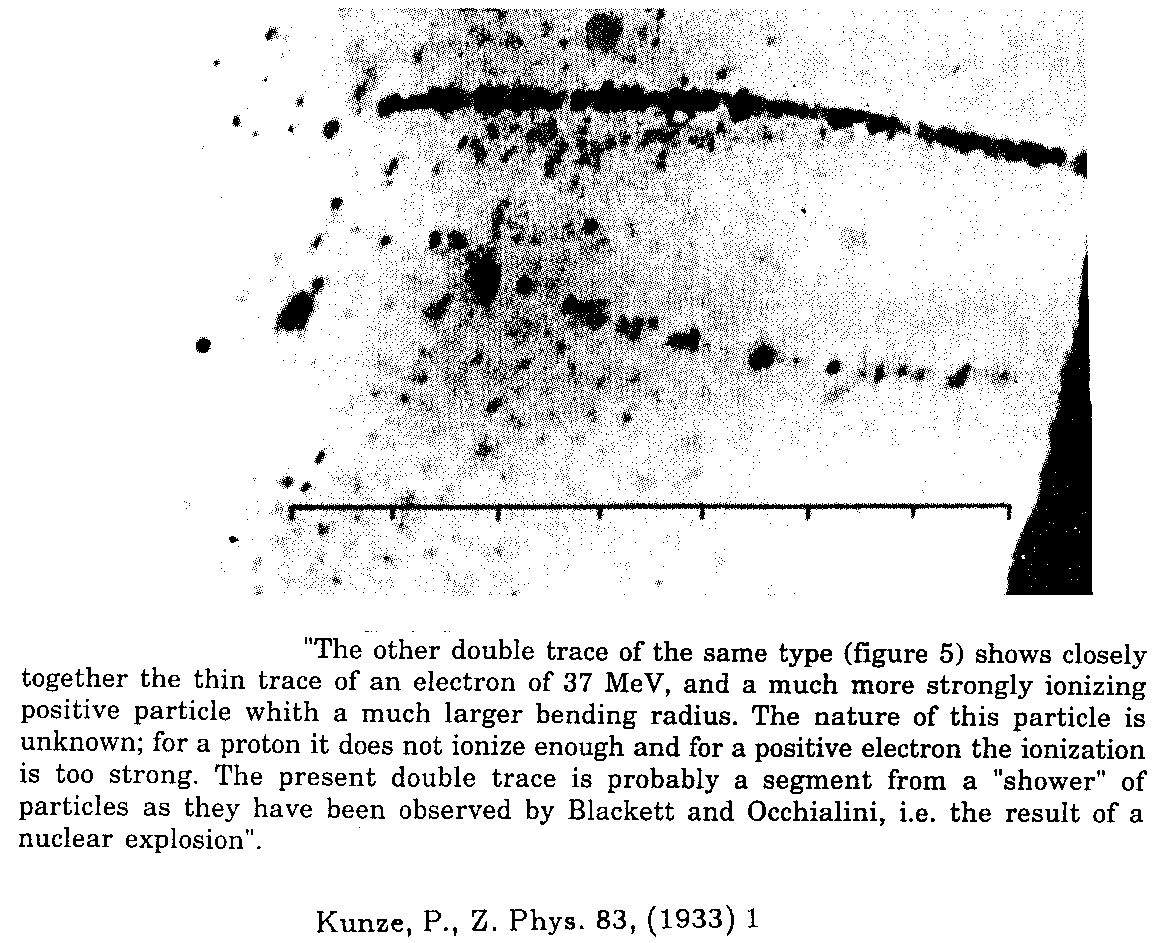
The first muon ever detected, along with other cosmic ray particles, was determined to be the same charge as the electron, but hundreds of times heavier, due to its speed and radius of curvature. The muon was the first of the heavier generations of particles to be discovered, dating all the way back to the 1930s.
Then particle accelerators and colliders arrived, revealing nature’s secrets at still higher energies.

Bubble chamber tracks from Fermilab, revealing the charge, mass, energy, and momentum of the particles and antiparticles created. This recreates similar conditions to what was present during the Big Bang, where matter and antimatter can both be readily created from pure energy. At the highest energies, all particles and antiparticles can be created, but at energies corresponding to “only” a temperature of ~10 billion K or so, electron-positron pairs can still be spontaneously created.
As the energy frontier progressed, more and more of the Standard Model was uncovered.
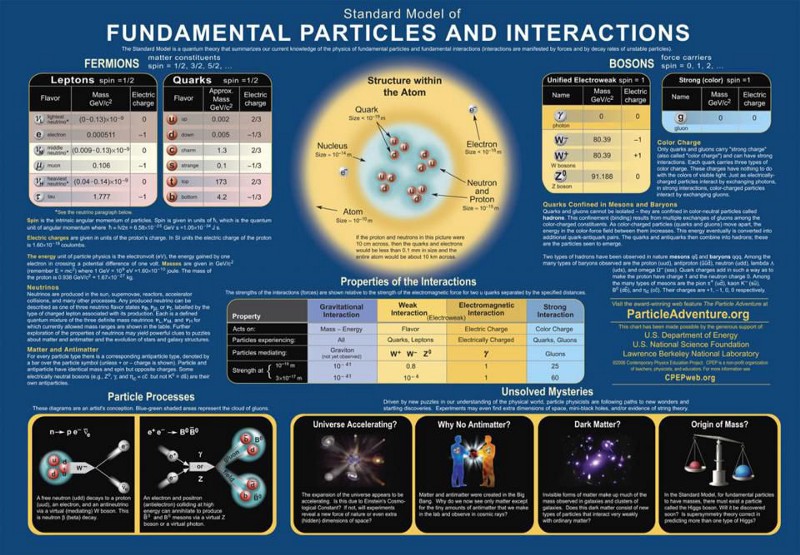
This chart of particles and interactions details how the particles of the Standard Model interact according to the three fundamental forces that quantum field theory describes. When gravity is added into the mix, we obtain the observable Universe that we see, with the laws, parameters, and constants that we know of governing it. However, many of the parameters that nature obeys cannot be predicted by theory, they must be measured to be known, and those are “constants” that our Universe requires, to the best of our knowledge.
Finally, in the 2010s, the Higgs boson was discovered at the Large Hadron Collider (LHC), completing the Standard Model.
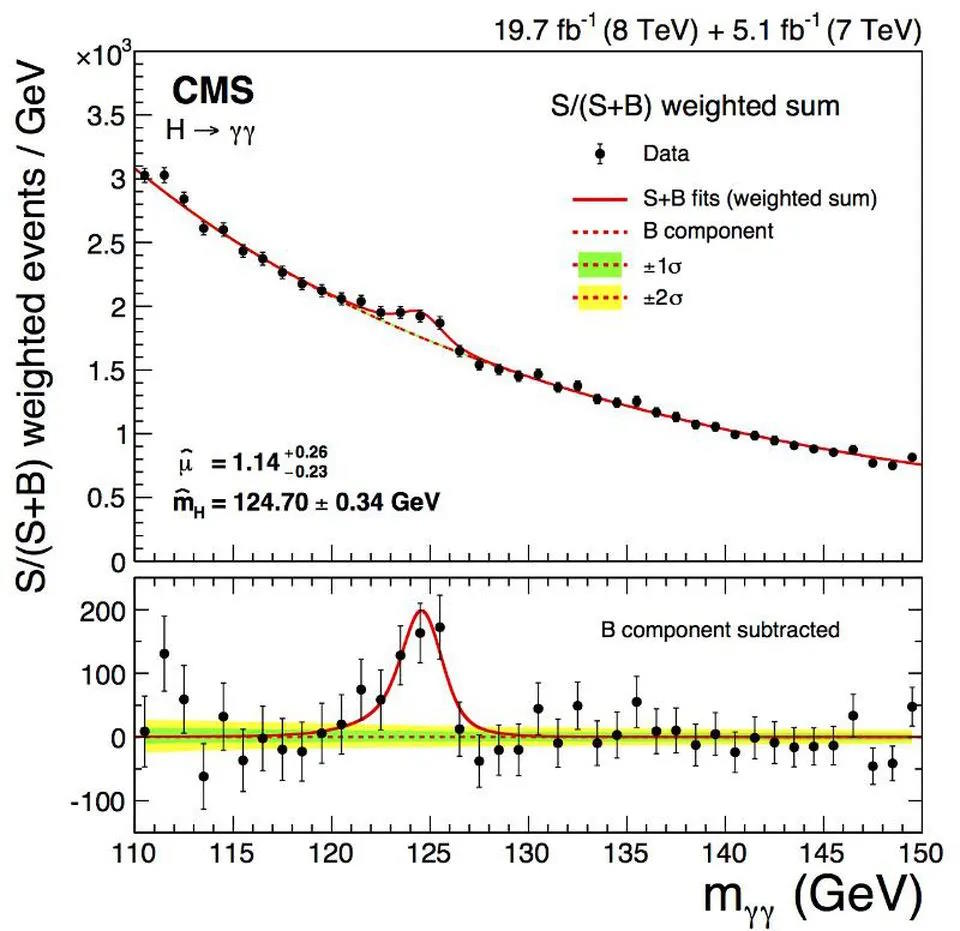
The first robust, 5-sigma detection of the Higgs boson was announced a few years ago by both the CMS and ATLAS collaborations. But the Higgs boson doesn’t make a single ‘spike’ in the data, but rather a spread-out bump, due to its inherent uncertainty in mass. Its mass of 125 GeV/c² is a puzzle for theoretical physics, but experimentalists need not worry: it exists, we can create it, and now we can measure and study its properties as well. Direct detection was absolutely necessary in order for us to be able to definitively say that.
Many hope to build new, more powerful colliders, attempting to unearth additional secrets about reality.
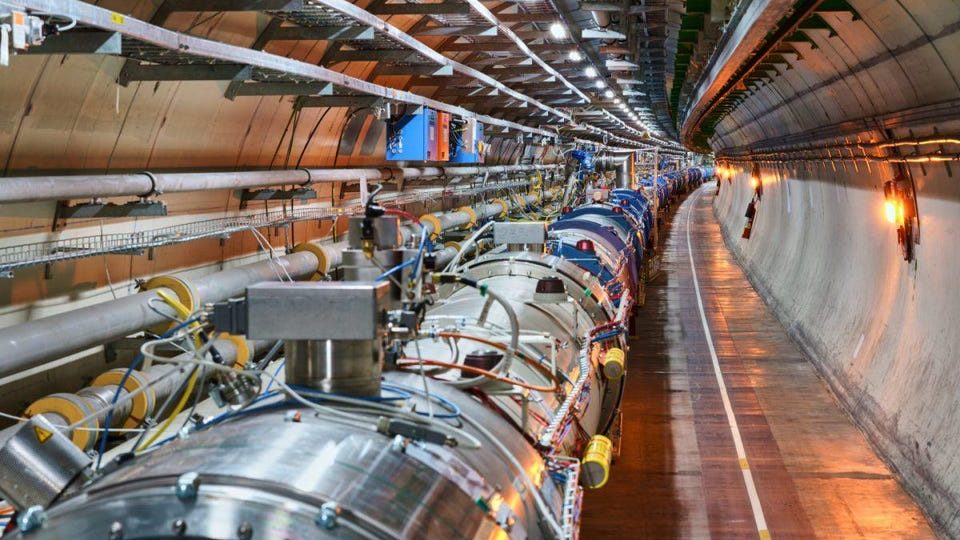
Deep underground, this tunnel is part of interior workings of the Large Hadron Collider (LHC), where protons pass each other at 299,792,455 m/s while circulating in opposite directions: just 3 m/s shy of the speed of light. Particle accelerators like the LHC consist of sections of accelerating cavities, where electric fields are applied to speed up the particles inside, as well as ring-bending portions, where magnetic fields are applied to direct the fast-moving particles toward either the next accelerating cavity or a collision point.
It could be a linear collider: probing heavy, unstable particles exquisitely.
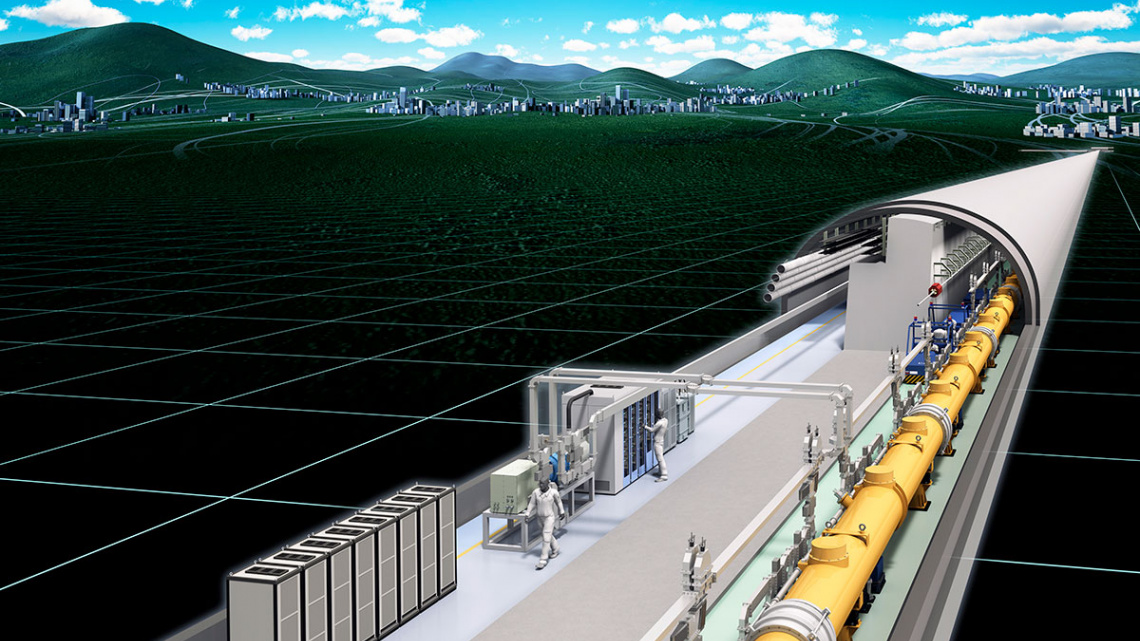
Although there are many novel proposals for new particle colliders, including in China, at CERN, and at Fermilab, the question of whether to build a circular machine, a linear lepton collider, or to pursue a novel muon collider all remain options on the table. In an ideal world, we’d get a linear machine to study the Higgs and the electroweak phase transition with great precision, and then a circular machine to collide hadrons at even higher energies. But funding, political realities, and popular opinion will also play a major role in determining what decisions get made.
It could be a circular collider, progressing farther than ever into the energy frontier.
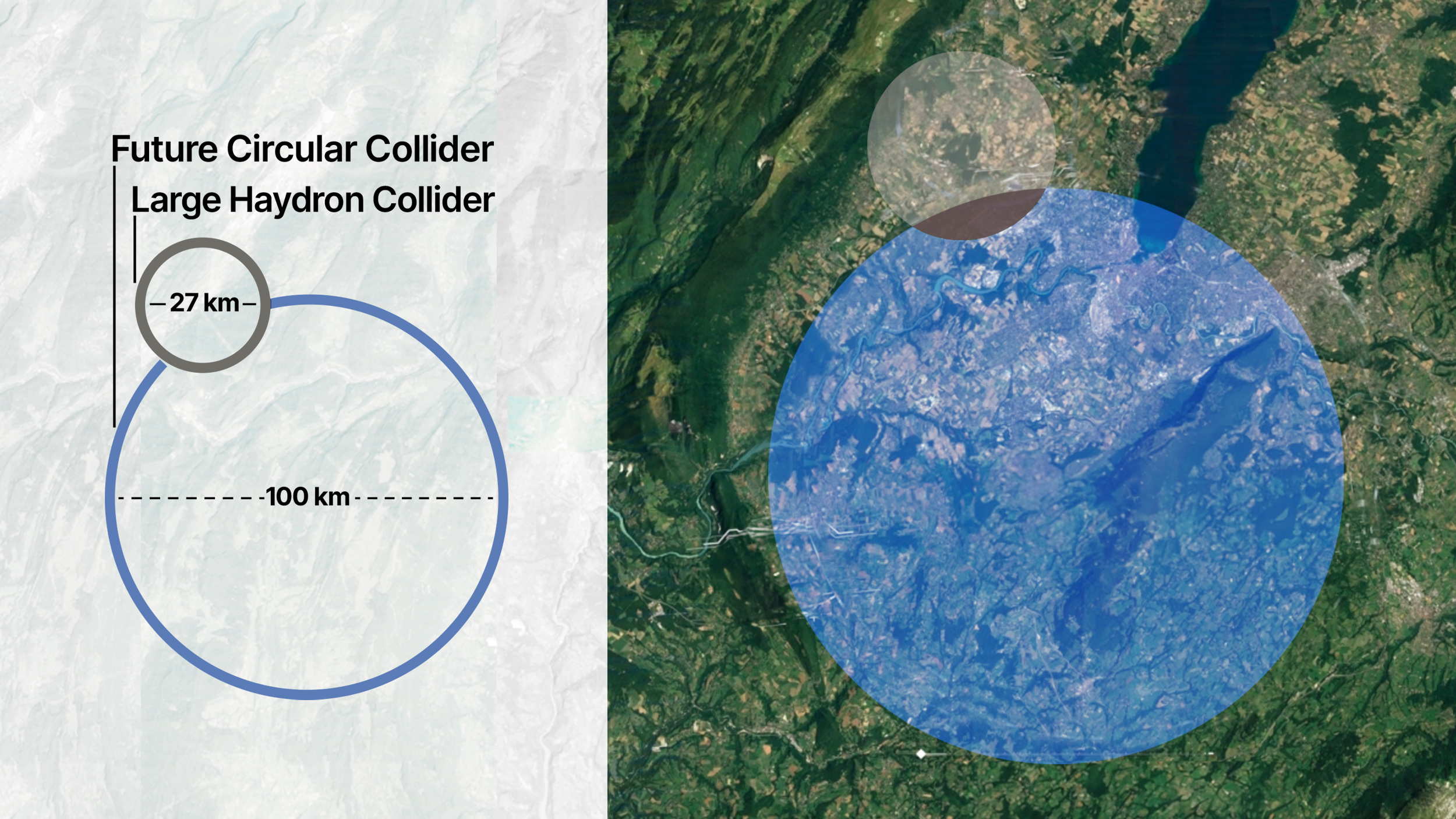
The Future Circular Collider (in blue) would overlap slightly with the current Large Hadron Collider, but requires an additional ring (and tunnel) somewhere upward of 80 km in circumference: dwarfing the LHC’s current 27 km circumference. Bigger tunnels and stronger magnets are needed for a more energetic hadron collider, with the FCC proposing ~16 T magnets, approximately double the LHC’s current magnet strength.
Someday, we may even build a collider around the Earth: thousands of times as powerful as the LHC.
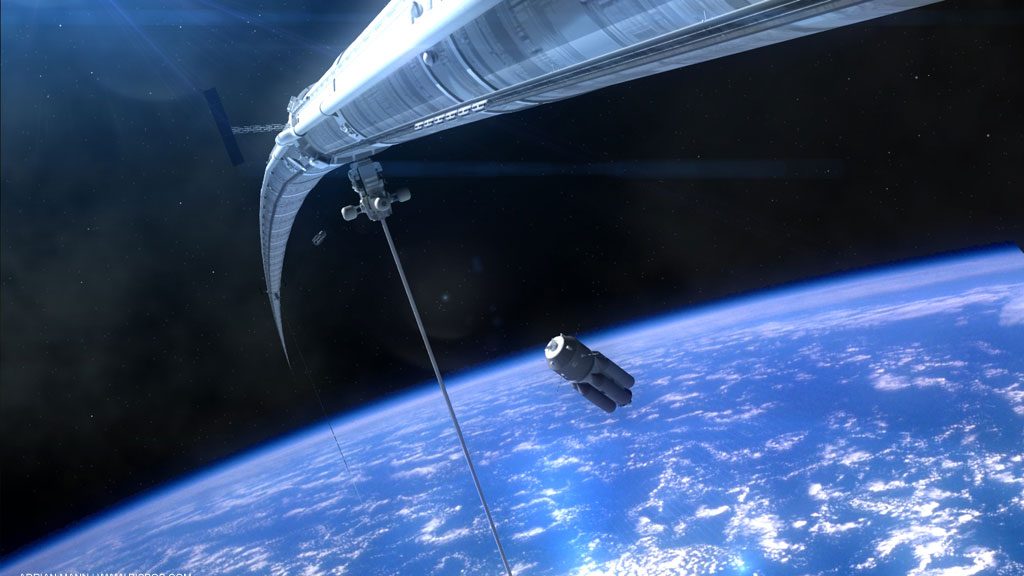
This illustration shows a hypothetical ring around the Earth, which could represent a particle accelerator even larger than the Earth’s circumference. With approximately ~1500 times the radius of the Large Hadron Collider, such an accelerator, even with only slightly more advanced magnet technology, would be thousands of times more powerful. A particle accelerator that was merely a factor of ~10 more powerful than the LHC could potentially shed tremendous light on the matter-antimatter asymmetry puzzle.
At some point, however, there will be a limit to whatever energies colliders can pragmatically reach.
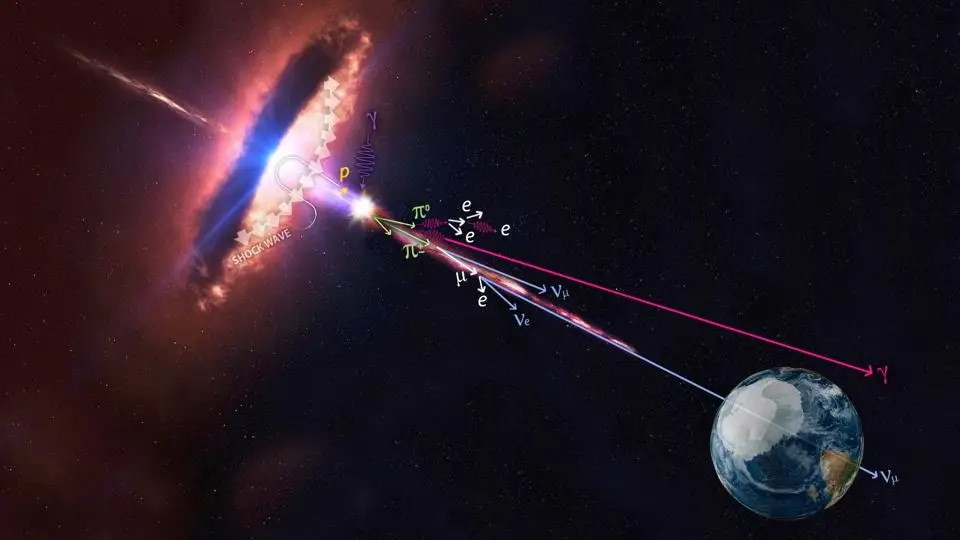
In this artistic rendering, an active, supermassive black hole whose jet points at us (a blazar) is accelerating protons to extreme energy, producing pions as daughter particles, which in turn produce neutrinos and gamma rays. Extreme events in energy are thought to be generated by processes occurring around the largest supermassive black holes known in the Universe when they’re actively feeding. The energies of these cosmic rays vastly exceed those achieved in terrestrial accelerators.
Credit: IceCube collaboration/NASA
However, the Universe creates cosmic rays exceeding ~1011 GeV: millions of times the LHC’s maximum energy.
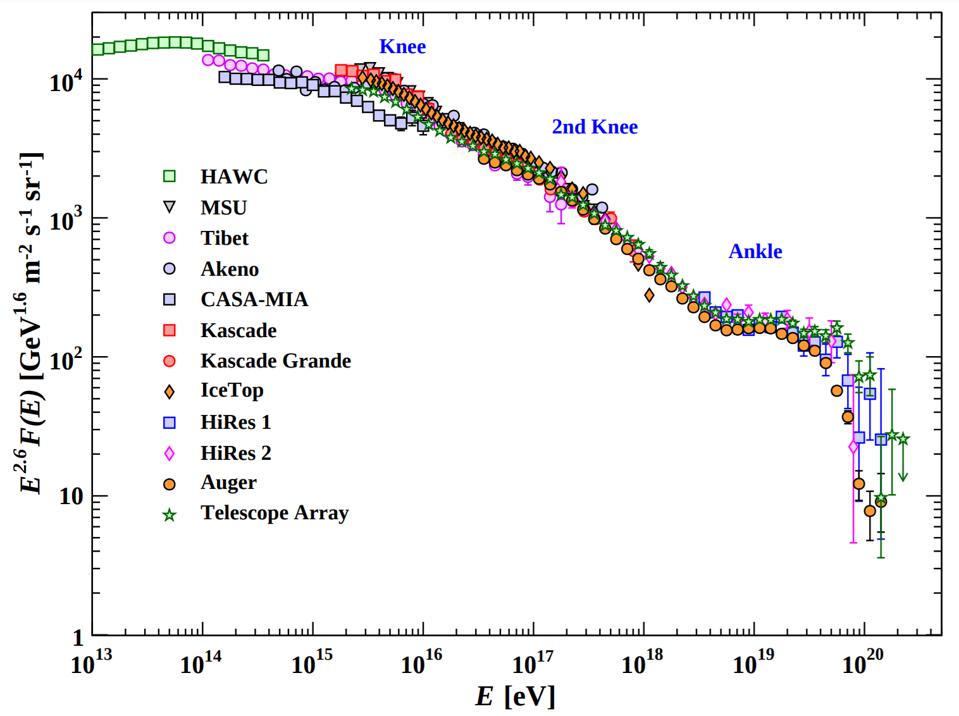
The energy spectrum of the highest energy cosmic rays, by the collaborations that detected them. The results are all incredibly highly consistent from experiment to experiment, and reveal a significant drop-off at the GZK threshold of ~5 x 10^19 eV. Still, many such cosmic rays exceed this energy threshold, indicating that the heaviest cosmic rays are likely heavy nuclei, rather than the more common bare proton.
Credit: M. Tanabashi et al. (Particle Data Group), Phys. Rev. D, 2019
After the last collider has finished, rare, ultra-energetic cosmic rays will continue revealing the Universe’s secrets.
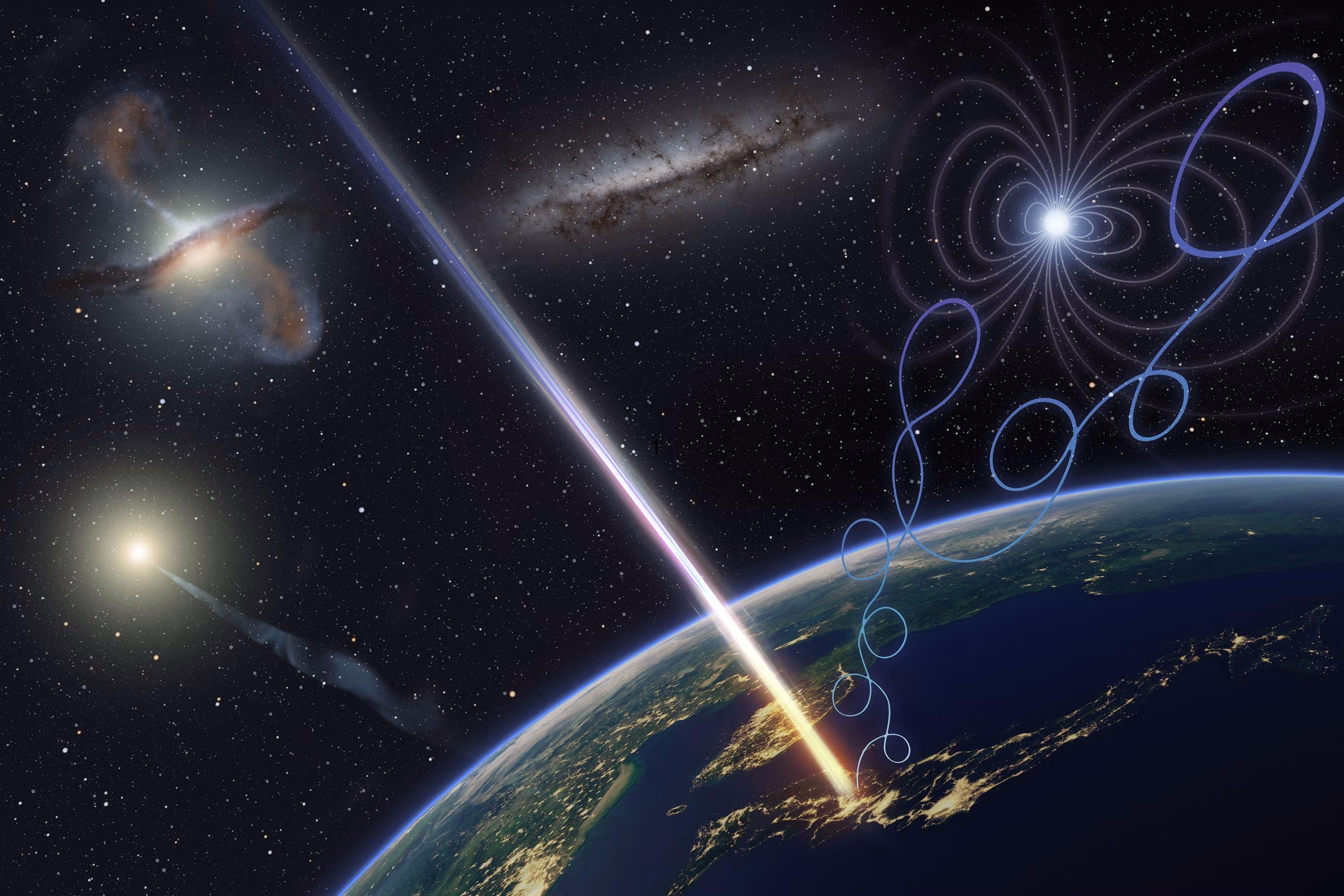
In May of 2021, the second most energetic cosmic ray ever detected struck Earth, producing a shower of particles detected on the ground by the Telescope Array Collaboration. These particles achieve energies more than a million times greater than the maximum LHC energy, such that after humanity has built our last collider, the energy frontier will still be accessible from space, albeit extremely rarely.
Credit: Osaka Metropolitan University/Kyoto University/Ryuunosuke Takeshige
Mostly Mute Monday tells an astronomical story in images, visuals, and no more than 200 words.
Sign up for the Starts With a Bang newsletter
Travel the universe with Dr. Ethan Siegel as he answers the biggest questions of all.
